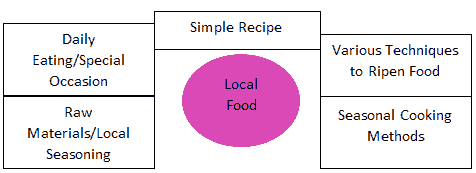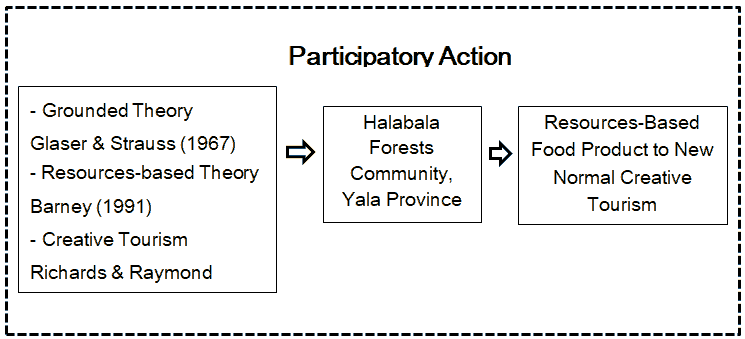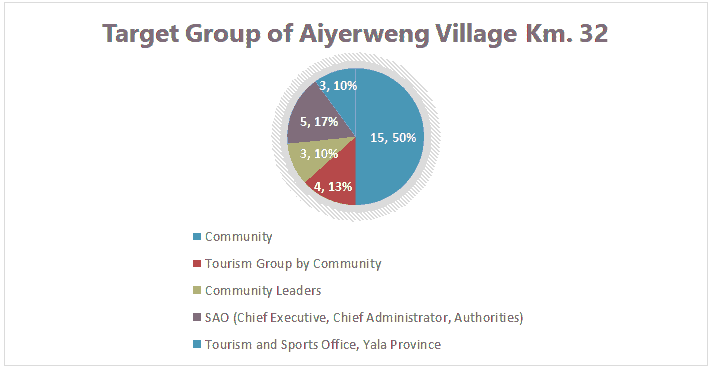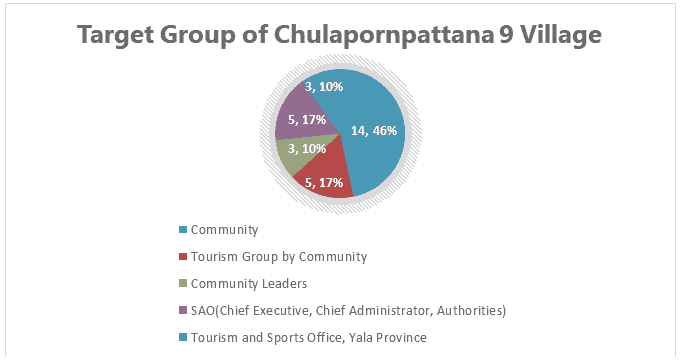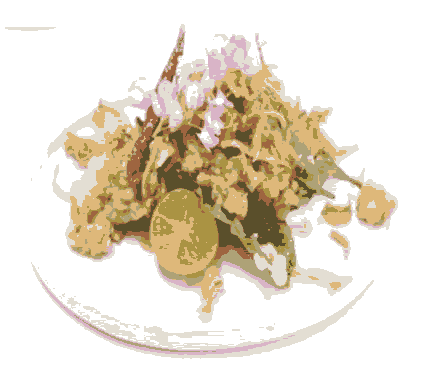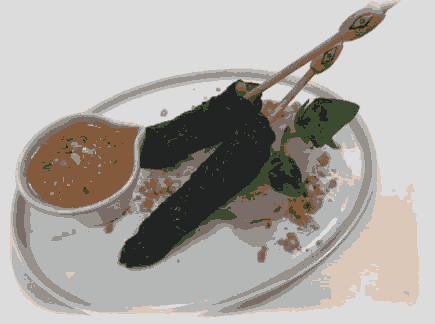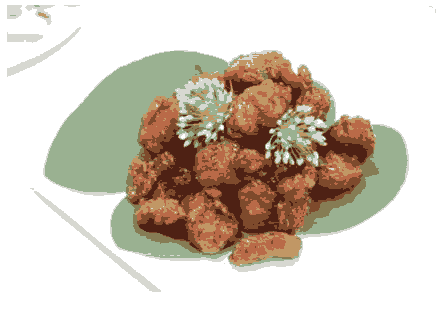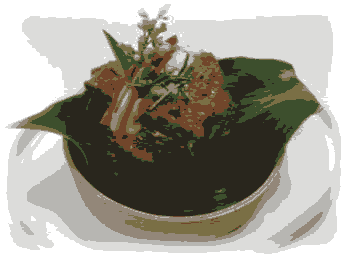Research Article: 2022 Vol: 28 Issue: 2S
Developing Resources-Based Food Product to New Normal Creative Tourism: Halabala Community, Thailand
Sukrita Raksudjarit, Yala Rajabhat University
Nantharat Namburi, Yala Rajabhat University
Thanakul Kootiphakdee, Yala R ajabhat U niversity
Jenta Kaewfai, Yala Rajabhat University
Warawut Waranantakul, Yala Rajabhat University
Sirichai Namburi, Yala Rajabhat University
Ekkarat Suwannarat, Independent researcher
Citation Information: Raksudjarit, S., Namburi, N., Kootiphakdee, T., Kaewfai, J., Waranantakul, W., Namburi, S., & Suwannarat, E. (2022). Developing resources-based food product to new normal creative tourism: Halabala community, Thailand. Academy of Entrepreneurship Journal, 28(S2), 1-13.
Keywords
Creative Tourism, Halabala Forest, Food
Abstract
Tourism behaviors in the coronavirus pandemic era and after such crises called new normal or next normal reveals that the tourists emphasize the safety from such pandemic situation. Moreover, unseen destinations where are without crowded people turn to be interested (Khungthai, 2021). Therefore, focusing on a new normal creative tourism development that expresses the identity of tourist destinations not full of people is regarded as a challenge. The researchers' team has attention to developing food identity considered a promotion part of creative tourism activity. It will be worthiness and able to respond to tourists' needs, and it will be recognized by word of mouth and revisit from the tourists. The research was carried out using qualitative research type by Participatory Action Research (PAR). The key informants' group derived from purposive selection through the agents of public and private sectors, community leaders, and community representatives, a total of 60 persons, in two districts of Yala province, the southern border of Thailand. The instrument used included Focus Group and Interview, a total of 10 persons, using Frequency, Percentage, and Content Analysis. The research result found that the key informants' group agreed to propose the advantages of resources showing the specific identity in the area to create food menus focusing on easy-found ingredients and materials from each locality available in the area. Besides, the cooking would not be difficult and emphasize the identity leading to generate various activities within the creative tourism routes to support the tourists after the new normal, which causes the incomes distribution to the community that affects the economy results at a provincial and country-level more efficiently.
Introduction
According to the current situation around the world that has been encountering the Covid-19 pandemic problem, it affects the global economy by damaging values numerously, and Thailand is no exception affecting widespread. From the mentioned situation, it causes the lockdown measure to inhibit such germ. However, it makes the economic system disrupted and affects the lives of people, economic sectors, as well as the economy of the country as a whole. The number of tourists will probably decrease by 60% from the previous year, which affects the economic growth of the nation to shrink to 5.4%. (Krungsri, 2020). From such a situation, Yala province, located at the southern border of Thailand, regarded as one of the provinces, is much affected. It causes the tourists' group from Malaysia, Indonesia, even the Thai tourists to have disappeared to 95% (Siamrath, 2020). They usually travel to this area because of the variety and beauty of many tourist attractions. Furthermore, people living here uphold agriculture as their major career. They have their unique traditions and cultures, beautifully and plentifully natural resources in Halabala forest areas. The areas are considered the food sources of people in the three southern borders provinces that are valuable for development to make confident to the tourists. It is concordant with the goal of the Yala 5 years Development Plan (2018-2022), focusing on the development of Secured Life Quality, Prosperous Agriculture, and Sustainable Tourism. It emphasizes the development of life quality, making incomes, and enhancing happiness. The city focuses on the security, equity, and fairness of society. In addition, the economy can be competitive in the economic system. These can be successful if driving Yala becomes a tourism city liveable, people are healthy, have morality, and achieve safety on their lives and properties. However, this research focuses on developing the communities surrounded by Halabala Forest areas. There have been plentiful and beautiful tourist attractions through nature and history, such as Aiyerweng Skywalk (its construction values 91 million baht) and Chaloemprakiat King Rama IX Waterfall. Halabala forests are the areas lived by Thai Nation Development Cooperators. For the environments around the villages there, they are still abundant forests and the essential tourist attractions of this province. Tourists can achieve a peaceful lifestyle, learn the past lifestyle through the historical museum, which has the weapons and appliances exhibition, including a heroic monument of the previous political rulers (Yala Provincial Administration Organization, 2017). Nevertheless, Richards & Raymond (2000) indicated that creative tourism is concerned as an opportunity to let the travelers develop their potentials through the participation of authentic experiences, such as learning how to weave the local clothes or cook local food. For these areas, the tourism management still lacks knowledge on tourism management such as tour guide, boat drivers or having ideas on creative tourism activities (Salamseng et al., 2017; Namburi et al., 2021).
From the reasons mentioned above, the researchers' team emphasizes studying the development of resources-based food products to new-normal creative tourism to support and respond to the current tourists' behaviors. It will be focused on taking part in the improvement based on resources, intellectuality, identity, and culture, to generate the touching of livelihood, realize the values of areas deeply, which will lead the tourists to tell others by word of mouth and revisit. It will enhance and stimulate the economy at a root base level then extend such enhancement and stimulation of this economic growth to the provincial and national level for stability further.
Literature Review
Local food is an identity clearly expressing the cultures of that locality. Folks cook by using materials available from nature. The cooking ways are simple without complicated methods. The cookery has been transferred from generation to generation. The food is about to consume both in daily life and various opportunities. As Phrutivorapongkul (2008) identified the meaning of local food that it is a kind of food consumed by people in their routine life and any opportunity. The ingredients and materials are from several resources, such as surrounding natural resources. People get them by hunting-gathering, fishing, and self-producing. Local food exposes culture and uniqueness. It is regarded as food full of valuable cultures and nutrients (Department of Thai Traditional and Alternative Medicine, 2008). The characteristics of local food are shown in Figure 1 below:
For marketing competition today, it has to rely on the competitive advantages using the resource-based existing within an organization to prevent the rivals from imitation. Preble & Hoffman (1994) suggested that to gain competitive advantages, the corporation has to overcome cheap prices, outstanding products, or different services (Gilbert & Strebel, 1989). Hence, it becomes the background of the competitive competence on the Resource-Based View Theory created by Barney (1991) for possessing the advantages under the competition of the rapidly changeable market. According to Food Resources-Base improved by the social movement process on agriculture and management of natural resources which has been changing in line with the relationship of anyone who has the dominant roles on agriculture starting from the locality level. Bunchai & Setsirote (2007) said that it is the concept related to food. For example, the resources-based food security brings the principle and concept-based development to the resources-based food focusing on the production resources. There are three conceptual components of the “resources- based food” which include, Group 1) the group of soil, water, forest, sea, and biodiversity, Group 2) knowledge, experience, belief, custom, and tradition in the community and society, and Group 3) agricultural and production system, including the Grounded Theory Study which its belief relies on the human behavioral perceptions (Glaser & Strauss, 1967; Pumkaew et al., 2020; Pumkaew et al., 2021), by Glaser & Strauss (1967) who mentioned that the Grounded Theory Study is about learning the phenomenon from the views and giving meanings of the human being from the phenomenon then bringing the information got to create the concept and find the connection from various concepts to reach the theoretical conclusion for elaborating and making understanding the happened phenomenon. On the other hand, it is the learning and making understanding the matters relevant to human behaviors and mutual life that it is necessary to perceive the process of the individual (Satsanguan, 2008; Pumkaew et al., 2018).
Furthermore, the creative tourism model is a kind of tourism model developed and extended from cultural tourism. It focuses on conserving the local arts and cultures by allowing the tourists to participate in the community's tourism activities and promote the local product manufacturing to the market, to respond to the tourists' needs. The creative tourism activity, for instance, such as learning of local language, weaving, painting, carving, and cooking local food. Furthermore, Richards & Raymond (2000) revealed that it is a tourism type allowing travelers to developing their potentials and self-creativity through participation in the learning activity with authentic experiences according to the specific characteristics of the targeted areas. It is concordant with the research of Urzburger, et al., (2009), which indicated that creative tourism is a kind of tourism that gives the activities to create arts, crafts, and cooking, together with high-quality residence, having interaction with the locality that has specific characteristics. Besides, the community of Halabala Forests, Thailand, has a natural resources base and numerous interesting food because the Halabala Forests surroundings are plentiful and are the valuable treasures of the people in the community.as shows in Figure 2.
Research Methodology
This research is quanlitative research focusing on Participatory Action Research (PAR). The operation stages are as follows: 1) organized the meeting stage to propose the concepts of food expressing local identity based on natural resources to create with the representatives and leaders of the community, as well as relevant government sectors. Moreover, there was a Focus Group (5-7 persons per group) to find out food showing the local identity and resources-based production to the improvement for matching the new normal of today era. For the Focus Group, the participants were 60 persons totally, divided into thirty persons per village (forest areas included Tan-To and Betong District, Yala, Thailand), together with investigating the triangulation of information, 2) used the In-depth Interview with the community representatives, or local gurus on local food to enter into learning management process of the food product to a commercial food product. The representatives were twenty persons, divided into ten persons per area, 3) develop the knowledge base about intellectuality got from the Participatory Action Research mentioned above to develop and mix with the local identity trace, including creating to match with the new normal by emphasizing health and hygiene according to the current standard of Department of Communicable Disease Control, 4) screened the products been developed by five healthy food experts. The data analysis used included Descriptive Statistics, Frequency, Percentage, and Content Analysis.
Research Result
The result of organizing the community stage to represent the concepts of food products that have natural resources-based local identity, including organizing the Focus Group Discussion. The result is shown through the following graph: as shows in Figure 3.
From Figure 3, most of them were representatives from the community, 15 persons (50%). Secondly, it was from the representatives of tourism group by communities and agents from government sectors, Aiyerweng Sub-district Administrative Organization such as Chief Executive, Chief Administrator, authorities, five persons (17%). Secondly was the tourists' group by the community, four persons (13%), and community representatives, which included a Village Headman, Assistant Village Headman, including Tourism and Sports Office, Yala Province, and authorities, had an equal numbers, three persons, also equal percentage at 10%.as shows in Figure 4.
Figure 4, most of them were the representatives from the community, 14 persons (46%), secondly was the representatives from the tourism group by the community and the representatives from the government sectors of Maewad Sub-district Administrative Organization such as Chief Executive, Chief Administrator, authorities with equal numbers, five persons, and equal percentages (17%), and the representatives from the community leaders, head villager, and Assistant Head Villager, as well as the representatives from Tourism and Sports Office, Yala Province, and authorities, with equal numbers, three persons (10%).
For the result of Focus Group, with the representatives of the community, or folk scholars of local food for the food product to commercial food product, the group of Aiyerweng Village Km. 32, it can be concluded that in the resources-based areas, there are the outstanding points, which include Aiyerweng Ancient Coffee/Kopi-Hala-Bala, simply called in folk language as “Kopi.” It is such ancient coffee which has a specific recipe for production, with intensive taste and uniquely beautiful smell, full-flavored, scented, bitter, and creamy. Kopi is mostly made with sugar or sweetened condensed milk as ancient kopi style. For Chulaporn Village 9, the areas where there are fascinating points include Taliwang Herb, which enhance healthiness. The folks there use it to be the ingredient of cooking such as Taliwang Boild Chicken. Furthermore, there are lots of fresh fish since the village is surrounding by the Lake of Bang Lang Dam which have such materials.
“Kopi here is full flavored, with the taste of nice smell, bitter, and creamy. The Kopi is mostly made with sugar or sweetened condensed milk as ancient style coffee. Its taste is so sweet to counteract the bitterness of coffee powder too. ”
“For its top leaves, my mom also likes to make Thai Dressed Salad. The Thai Dressed Salad with Coffee Top Leaves tastes good, so creamy, its taste is not bitter.”
“I think food in our community since Communist Generations they have brought a herb to add as an ingredient, called Taliwang Domestic Fowl because this herb enhances energy after eating it.”
As shows in Table 1.
| Table 1 Index From Interview |
|||||
|---|---|---|---|---|---|
| Number | Question Items | Aiyerweng Village Km. 32 | Chulaporn Village 9 | ||
| Answer | Percentage | Answer | Percentage | ||
| 1 | What kind of food do you think is the most outstanding point of the community? | - Thai Dressed Salad with Coffee Top Leaves | 40.00 | - Taliwang Boiled Chicken | 50.00 |
| - Boiled Hala with Torch Ginger | 30.00 | - Food mixed with herbal ingredients | 10.00 | ||
| - Ancient Kopi | 10.00 | - Fried Naked Fish | 10.00 | ||
| - Thai Dressed Salad with Bracken Fern | 10.00 | - Three Flavoured Deep-fried Keun Fish | 10.00 | ||
| - Mineral Water with glutinous rice roasted in bamboo joints | 10.00 | - Taliwang Wild Boar | 10.00 | ||
| - Pickled Fish | 10.00 | ||||
| 2 | How do you think the ingridients, procedures, and process making of the community’s prominent food shoud be? |
For Thai Dressed Salad with Coffee Top Leaves, the cooking methods are similar to any salad dressing but emphasizing adding more undiluted coconut milk to get it creamy, mixed with the coffee top leaves to increase the creamy taste. Then add sliced red onions, small pieces of roast fish, add shrimp paste a little after that pound all ingredients together. Shrimp, squid, and others can be added, as preferred. | 100.00 | - Domestic fowl or wild boar is ready to chop and boil and wait for the water to get boiling. Our community prefers bringing each kind of herbs to mix a little for energy nourishment. Then bring the meat prepared to the boiling water, flavor the tastes with salt or sugar. | 70.00 |
| - Bring the Naked Catfish to be ready for deep frying, then add some salt and leave for 3-5 minutes, that it is ready to be fried until its meat becomes a little yellow. | 10.00 | ||||
| - Bring fresh fish to gut and cut in stripes, then fry it to turn a yellow color. After that, make the three tastes, salty, sweet, and creamy, to get full-flavored altogether. | 10.00 | ||||
| - Bring a Thai Silver Barb (Pla Ta Pian) to clean and preserve it with some salt, then leave it for a night. Next, clean out the salt and leaving it on the drain for a while. After that, bring roasted rice with sugar to mix with fish meat, and preserve it with some fish sauce for 10 days. The meat has to be covered thoroughly. | 10.00 | ||||
| 3 | If some food or remarkable raw materials of the community are brought to develop as a product or an activity, containing it in the tourism routes to allow the tourists to join the cooking procedures, pursuing creative tourism, do you think it is possible, and how? |
- Possible | 100.00 | - Possible | 90.00 |
| - Not sure | 10.00 | ||||
| 4 | Additional Recommendations | - None | 60.00 | - None | 60.00 |
| - It should get promotion seriously to let the community have careers and incomes; | 10.00 | - It should get promotion seriously to let the community have careers and incomes. | 10.00 | ||
| - It is an important point that we have to do and support people in the community to have incomes, reach good quality. We bring our strength as the main for community management as a model to be a sample for other provinces to apply with; | 10.00 | - It should propose the stories and significance of the used raw materials, especially various kinds of herbs, or introduce a group of Communists during the time the tourists have mutual cooking with the community; | 20.00 | ||
| - This community have several distinctive points such as tourist attractions or various kinds of food; | 10.00 | - There are numerous natures around the Halabala Forests. The tourists can touch and study, which will generate many creative tourism activities. | 10.00 | ||
| - Our community is located in the natural Halabala Forest areas. They are regarded as learning resources, and there are a lot of creative tourism activities. | 10.00 | ||||
According to Table 1, from the interview done with the community's representatives or folklore scholars in Aiyerweng Village Km.32, the result is as follows: if developed food and fantastic materials to become a food product or an activity containing in the tourism routes to let the tourists take part in the cooking procedure, to be concordant with the creative tourism, which would reach the 100% possibility to be outstanding for that community is the 'Top Leaves of Coffee Plants' (40%), and secondly was 'Boiled Hala with Torch Ginger' (30%). Most of the participants gave opinions about the ingredients and procedures to make the Thai Dressed Salad of Coffee Plants Top Leaves similar to any general recipe of Thai Dressed Salad. However, undiluted coconut milk added to be creamy, together with adding shrimp, squad, and others, this opinion got the percentage at 100%. For the aspect of 'without additional recommendations,' it was at 60%. Regarding the aspect of 'it should promote the menu seriously as a career or to get income, the aspect of 'our community is located around Halabala Forests has various natures as a learning resource', and the aspect of 'there are numerous creative tourism activities' reached an equal percentage (10%), respectively.
For Chulaporn 9 Village, the interview result of the community representatives or folk scholars found that if bringing the outstanding food or fantastic materials to develop as a food product or as an activity set in the tourism routes for allowing the tourists to participate in the stage of cooking, to be under the creative tourism, the possibility was high at 90%. And for the answer of not sure, it was at 10%. Most of the responders viewed that 'the food considered outstanding in this community was domestic fowl or Taliwang wild boar, or any food with its ingredients mixed with the Taliwang reached the percentage of 50%, secondly was the food mixed with herbs, Fried Naked Catfish, Three Flavored Deep-fried Keun Fish, Taliwang Wild Boar, and Pickled Fish had the percentage equally at 10%. Most of the responders had an opinion about the ingredients, procedures, and cooking process considered an essential point of the community in terms of 'Domestic Fowl or Wild Boar readily prepared for boiling and chopping', 'our community likes bringing each kind of herbs to mix altogether a little for nourishing the energy, then boil water, put some chicken meat in the pot full of boiled water, and flavored with salt or sugar', at 70%. For the answer of 'without any additional recommendations', it was 60%. For the recommendations about 'it should represent the stories and significance of used materials especially various herbs', or Communists Group and tourists cook together, it was 20%, while the opinion of 'it should organize the promotion seriously' was at 10%, respectively.
According to the research result above, the researchers' team brought the distinctive point of the areas together with the local wisdom to create the food menu for the Aiyerweng Village Km. 32 for two menus as shown in the Figure 5, 6 ,7 and 8 below:
Furthermore, Chulaporn 9 Village created the food from the areas' prominent points for two menus as shown in the Figures below:
Discussion and Conclusion
Regarding the research result expressing the prominent points of the resources of this area, it was Aiyerweng Ancient Coffee/ Hala Coffee. Its name is simply called by folks language as “Kopi.” It is the ancient coffee having a certain recipe through its production. Moreover, it has intensive tastes and a uniquely beautiful smell. Furthermore, it has full-flavored tastes by having good smell, bitter and creamy taste. It is mostly made this Kopi with sugar or sweetened condensed milk as an ancient coffee style. For Taliwang Herb, its property is to enhance the healthy body. Folklores there mostly used this kind of herb as an ingredient of their cooking such as Taliwang Boiled Chicken. Besides, fresh fish are living in the Bang Lang Dam concerned as valuable resources concordant with the identity of this area. It is concordant with the research of Worawongpitak, et al., (2021) that revealed the Chinese community emphasizes the Taliwang Herb as having properties on nourishing energy and reducing the blood lipid. For Chinachot (2016), he mentioned that it should build or increase the values to the identity resources, or cultures of this area. Besides, Collison & Spears (2010) found that the creative tourism management model is considered the tourism activities, innovative products, or unique tourism services cooperated by both entrepreneurs and the community.
According to the interview result in terms of question items on the possibility of food, ingredient, procedure, and making process, under the prominent point of the community, to develop them as a product or an activity determining in the tourism routes allowing the tourists to take part in the stage of finding out the materials for cooking, it reached a high level of probability. In addition, it is concordant with Raymond & Richards (2000); Smith (2003), who revealed that creative tourism is tourism that allows travelers to develop potentials and self-creativity through the participation of learning activities with authentic experiences according to the specific characteristics of the targeted areas. Moreover, creative tourism is a kind of livelihood tourism that makes people learn how the folks live a life such as their residences, careers, food, and arts and crafts. These reflect the identity of the community and the people who own such an area. The emphasis is on having interactions through focus groups and practical try-out activities, such as trying out to make food, do arts and crafts, which will perceive the identity cultures of places and people there through the direct- experiences. It is the lively learning stage. Furthermore, there were recommendations from the two villages that have the similarity on enhancing the community to have a profession and income. It is concordant with Underberg-Goode (2014), who indicated that various developed projects generate the tourists to have a chance to participate in the community and get a mutual development from several sectors, including the development of local food to attract and maintain the tourists to be interested in such community.
Concerning the research result, the target group emphasizes a natural-based local identity food as the main point. Besides, the environments around Halabala Forests had abundant natural resources. Therefore, the folks can bring the varied materials from such forests for consumption in their daily life. It is following Sattarattanakhachon (2020) who suggested that local food of the community had raw materials available in the locality and natural resources for developing and creating the added-values to the local food. The people in the community selected potential local food to improve and generate additional values for the tourists. The stages applied by the concept of local intellects improvement to the creative development include 1) conservation, 2) application, and 3) innovative creation. It acquires the activities for the tourists to promote local tourism. Also, Haukeland & Jacobesen (2009) found that local food is a specific symbol of each locality. Tourists will have local food produced by raw materials available in the locality. Hence, it originates the innovative tourism that enhances tourists to learn new experiences until it is popular among them. This group of tourists is called Culinary Tourists. The purposes of traveling are to learn and seek experiences by using the local food as an instrument.
Acknowledgement
This research was funded by the National Research Council of Thailand (NRCT), 2020 Fiscal Year. 1. First Author: Dr. Sukrita Raksudjarit, Doctor of Philosophy (Accounting Program) Sripatum University, Thailand. Currently, she is a lecturer teaching for Accounting Program, Yala Rajabhat University. E-mail contact: sukrita.r@yru.ac.th, 2. Corresponding Authors: Associate Professor Dr. Nantharat Namburi, Doctor of Philosophy (Ph.D.), Business Administration Program, Ramkhamhaeng University. Currently, she is a lecturer teaching for Accounting Program, Yala Rajabhat University. E-mail contact: nantharat.n@yru.ac.th, and 3) Essentially Intellectual Contributor, Lecturer Jenta Kaewfai, Master of Tourism Administration, Tourism Administration Program, Bangalore University, India. Currently, she is a lecturer teaching for Tourism Program, Yala Rajabhat University. E-mail contact: Jenta.k@yru.ac.th.
References
Bunchai, K., & Setsirote, B. (2007). Concept and policy of food resources base. The (1st Edition). Nonthaburi: Bio Thai Foundation.
Barney, J.B. (1991). Firm resources and sustainable competitive advantage. Journal of Management, 17, 99-120.
Chinachot, P., & Chantuk, T. (2016). Model of creative tourism management in SuanPhueng. Veridian E-Journal. Silpakorn University, 9(1), 250-268.
Department of Thai Traditional and Alternative Medicine. (2008). Food forhealth. Bangkok: The war victory printing, The war veterans organization of Thailand under royal patronage of his majesty the king.
Fredrick, M.C., & Daniel, L.S. (2010). Marketing cultural and heritage tourism: The Marshall Islands. International Journal of Culture, Tourism and Hospitality Research, 4(2), 130-142.
Gilbert, X., & Strebel, P. (1989). From innovation to outpacing. Business Quarterly, 54(1), 19-22.
Glaser, B. & Strauss, A.L. (1967). The discover of grounded theory: Strategies of qualitative research. Chicago: Aldine Publishing Company.
Haukeland, J.V., & Jacobesen, J.K. (2009). Gastronomic in the Periphery: Food and cuisine as tourism attractions on the top of Europe (Research report). s.l: s.n.
Iamviriyawat, P. (2020). Strategy development for community elevation to creative tourism of Ban Phu Nam Ron, Dan Chang District, Suphan Buri Province. Dusit Thani College Journal, 14(2), 433-451.
Krugsri (2020). Review of Research Intelligence of April “Covid-19 Impact on the Thai Economy and Vulnerability of Thai Firms”.
Khungthai (2021). Tourism behaviors drilled in new normal when Covid makes life change.
MGR Online. (2019). Skywalk “Aiyerweng Skywalk” Betong, Readily Opened Amazing and Magnificent Skywalk.
Namburi, N., Pumkaew, S., Dahayee, W., Suttikan, M., Namburi, S., & Phongkraphan, N. (2021). Tourists’ demands towards tourism management after Covid-19. Psychology and Education, 58(2), 2568-2578.
Phrutivorapongkul, A. (2008). Thai Traditional Food in Academic Textbook for Health. Bangkok: Division of complementary and alternative medicine, Department of Thai traditional and alternative medicine.
Preble, J.F., & Hoffman, R.C. (1994). Competitive advantage through specialty franchising. Journal of Service Marketing, 2, 5-18.
Pumkaew, S., Phadoongsitthi, M., Saraphat, S., Sincharoonsak, T., Chuaychoo, M., & Penvutikul, P. (2018). The factors affecting financial effectiveness of managerial accounting information of small and medium enterprises of Para Rubber Industry in Thailand. Asian Administration and Management Review, 1(1), 102-114.
Pumkaew, S., Namburi, N., Tobprakron, P., Kaewfai, J., Kamon, O., & Chantarakeeree, S. (2020). The structural relationship of factors affecting managerial efficiency of manufacturing infustries. PalArch’s Journal of Archaeology of Egypt/Egyptology, 17(3), 998-1010.
Pumkaew, S., Kaewfai, J., Namburi, N., Waranantakul, W., Namburi, S., & Wareebor, J. (2021). Measurement model of managerial accounting practice: Residence business in Thailand’s three southern border provinces. Journal of Management Information and Decision Sciences, 24(1), 1-9.
Richards, G., & Raymond, C. (2000). Creative Tourism. ATLAS News, 23, 16–20.
Salamseng, P., et al., (2017). The Study of Tourism Potentials from Tapayao Community to Hala-Bala Forest, Tan To District, Yala Province. Full Paper, The Thailand Research Fund (TRF).
Sattarattanakhachon, K. (2021). The participatory development of local food to support cultural-creative tourism in Lampang Province. Mekong-Salween Civilization Studies Joural, 11(1), 154-173.
Satsanguan, Ng. (2008). Qualitative Research on Anthropology. Bangkok: Chulalongkorn University Press.
Siamrath (2020). "Get Poisoned by Covid-19!” Malay-Singaporean Tourists Disappear for More than 95 %.
Smith, C. (2003). Creative Britain. London: Faber and Faber.
Underberg-Goode, N.M. (2014). Cultural heritage tourism on Peru’s north coast.Worldwide Hospitality and Tourism Themes, 6(3), 200-214.
Worrawongpitak, J., E-sor, A., Jankaew, N., & Mama, L. (2021). Development of Local Herb Products of Umong Piyamitr 1 Community, Betong District, Yala Province Following Creative Economy.
Wurzburger, R., Aageson, T., Pattakos, A., & Pratt, S. (2009). A Global Conversation. How to Provide Unique Creative Experiences for Travelers Worldwide. Santa Fe: Sunstone Press.
Yala Provincial Administration Oranization. (2017). Than To District.
Received: 28-Nov-2021, Manuscript No. AEJ-21-8920; Editor assigned: 30- Nov -2021, PreQC No. AEJ-21-8920 (PQ); Reviewed: 09- Dec -2021, QC No. AEJ-21-8920; Revised: 20-Dec-2021, Manuscript No. AEJ-21-8920 (R); Published: 11-Jan-2022
